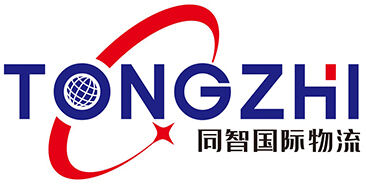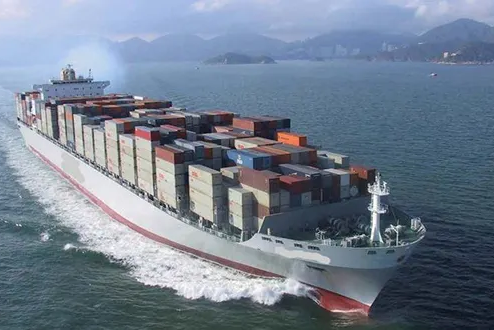Penghantaran kotak kargo adalah tiang penopang perdagangan global, membolehkan pergerakan barang yang cekap dan selamat di seluruh dunia. Dengan permintaan perdagangan antarabangsa yang terus meningkat, perniagaan mesti memahami hal-hal terperinci tentang penghantaran kotak kargo untuk mengoptimumkan operasi logistik mereka. Artikel ini meneroka amalan terbaik dan pertimbangan utama untuk meningkatkan kecekapan dalam penghantaran kotak kargo.
Memahami Penghantaran Kotak Kargo
Pengangkutan bekas melibatkan pengangkutan barangan dalam bekas yang besar dan piawai. Bekas-bekas ini hadir dalam pelbagai saiz, dengan yang paling umum adalah bekas 20 kaki dan 40 kaki. Standardisasi membolehkan pemindahan tanpa rintangan antara kapal, lori, dan kereta api, menjadikannya mod pengangkutan yang fleksibel dan cekap.
Kelebihan Utama Pengangkutan Bekas
Ketepatan: Bekas dirancang untuk penanganan dan tumpukan yang mudah, yang mempercepatkan proses memuatkan dan membongkar di pelabuhan. Ketepatan ini bermakna masa transit yang lebih pantas dan kos yang dikurangkan.
Keamanan: Barang yang diangkut dalam bekas kurang rentan kepada kerosakan dan pencurian. Pembinaan yang kukuh bagi bekas memberikan perlindungan yang baik terhadap unsur-unsur alam sekeliling dan potensi penyeludupan.
Kecekapan Kos: Pengangkutan bekas secara amnya lebih murah berbanding mod pengangkutan lain, terutamanya untuk penghantaran antarabangsa jarak jauh. Kemampuan untuk menggabungkan pelbagai penghantaran ke dalam satu bekas lagi menurunkan kos.
Kelincahan: Kotak-kotak boleh membawa pelbagai jenis barangan, dari bahan mentah dan mesin hingga barang mudah tapis dan produk jadi. Kotak khas, seperti kotak pendingin (reefers), memenuhi keperluan tertentu seperti kawalan suhu.
Praktik Terbaik untuk Penghantaran Kotak
Pilih Jenis Kotak yang Tepat
Memilih jenis kotak yang sesuai adalah perkara penting untuk memastikan pengangkutan barangan dengan selamat dan cekap. Kotak kering piawai sesuai untuk kebanyakan jenis muatan, tetapi perniagaan harus mempertimbangkan kotak khas untuk keperluan tertentu:
Kotak Pendingin (Reefers): Untuk barangan mudah tapis yang memerlukan kawalan suhu.
Kotak Atas Terbuka: Untuk muatan berukuran besar yang tidak dapat muat ke dalam kotak piawai.
Kotak Rakyat Datar: Untuk barang berat dan besar seperti mesin dan kenderaan.
Optimalkan Penggunaan Kotak
Mengoptimalkan penggunaan ruang yang tersedia dalam kotak boleh mengurangkan kos penghantaran secara signifikan. Perniagaan harus:
Bungkus dan Tumpuk Barang dengan Betul: Pastikan barang dihubungkan rapat dan selamat untuk mengelakkan pergerakan semasa penghantaran.
Gunakan Pallet dan Skid: Memudahkan penangangan yang mudah dan penggunaan ruang yang cekap.
Keseimbangan Penyebaran Berat: Sebarkan berat secara merata untuk mengekalkan kestabilan dan mengelakkan kerosakan.
Melaksanakan Sistem Penjejakan Maju
Penjejakan dan pemantauan sebenar penghantaran memberi maklumat bernilai dan meningkatkan kelihatanan sepanjang proses penghantaran. Sistem penjejakan maju menawarkan:
Kemas kini Lokasi Sebenar: Kekal usahawan diberitahu tentang lokasi dan status penghantaran mereka.
Pemantauan Keadaan: Pastikan barang yang peka kepada suhu kekal dalam julat yang diperlukan.
Analitik Peramalan: Ramalkan penundaan yang mungkin berlaku dan optimumkan laluan untuk penghantaran yang lebih pantas.
Pastikan Patuh kepada Peraturan
Kepatuhan kepada peraturan penghantaran antarabangsa adalah penting untuk mengelakkan penundaan dan denda. Usahawan harus:
Kekal Dikemaskini Mengenai Peraturan Perdagangan: Ketingkatkan dengan perundangan import/export dan keperluan piawaian untuk setiap destinasi.
Sediakan Dokumentasi yang Tepat: Pastikan semua dokumen yang diperlukan, seperti bil lading, sijil asal, dan nyatacara piawaian, diisi dan diserahkan pada masanya.
Berkhidmat dengan Penyelia Piawaian Berpengalaman: Memudahkan penyelesaian piawaian dan meminimumkan risiko isu kewajaran.
Gunakan Teknologi untuk Kecekapan Yang Lebih Baik
Teknologi memainkan peranan penting dalam mengoptimumkan operasi pengangkutan bekas. Perniagaan sepatutnya mengamalkan:
Perisian Pengurusan Penghantaran: Menyederhanakan proses tempahan, dokumentasi, dan penjejakan.
Sistem Penanganan Barang Automatik: Mempercepatkan operasi memuatkan dan membongkar di pelabuhan.
Teknologi Blockchain: Menambahbaik transparansi dan keselamatan dalam rantai bekalan dengan menyediakan rekod transaksi dan pergerakan yang tidak boleh diubah suai.
Kaedah Utama untuk Pengangkutan Bekas
Pengurusan Kos
Kos penghantaran boleh memberi impak yang signifikan kepada garis keuntungan perniagaan. Strategi utama untuk mengurus kos termasuk:
Menggabungkan Penghantaran: Gabungkan pelbagai penghantaran ke dalam satu bekas untuk memperoleh faedah daripada ekonomi skala.
Menegosiasikan Kontrak: Dapatkan kadar dan sebut harga yang menguntungkan dengan baris penghantaran dan peneraju kargo.
Memoptimumkan Litar: Pilih litar yang paling cekap dan kos-efektif untuk meminimumkan masa transit dan mengurangkan penggunaan bahan api.
Pengurusan Risiko
Pengurusan risiko berkaitan dengan penghantaran bekas adalah penting untuk memastikan penghantaran selamat dan tepat masa barang. Pertimbangkan berikut:
Kawalan Insuran: Lindungi terhadap kemungkinan
kerugian disebabkan oleh kerosakan, pencurian, atau tundaan.
Perancangan Kontijensi: Buat rancangan untuk menangani gangguan tidak disangka, seperti pemogokan pelabuhan atau bencana semula jadi.
Audit Berkala: Lakukan audit proses penghantaran dan rakan kongsi untuk mengenalpasti dan meredakan risiko.
Amalan Kelangsungan
Kelestarian menjadi semakin penting dalam logistik global. Perniagaan boleh mengamalkan kaedah ramah alam seperti:
Menggunakan Kapal Hemat Bahan Api: Pilih syarikat pengangkutan yang menggunakan kapal moden dan hemat bahan api untuk mengurangkan pembebasan karbon.
Melaksanakan Penyelesaian Pemakanan Hijau: Gunakan bahan kemas yang boleh didaur semula dan boleh terurai secara biologi untuk meminimumkan kesan alam sekitar.
Menetralkan Pembebasan Karbon: Sertai program penyeimbangan karbon untuk menetralkan jejak alam sekitar aktiviti pengangkutan.
Kesimpulan
Pengangkutan dalam bekas adalah komponen penting perdagangan antarabangsa, menawarkan kecekapan, keselamatan, dan kos yang berkesan. Dengan melaksanakan amalan terbaik seperti memilih jenis bekas yang betul, mengoptimumkan penggunaan bekas, memanfaatkan sistem pelacakan canggih, memastikan ketaatan peraturan, dan menyambut teknologi, perniagaan dapat memaksimakan faedah pengangkutan dalam bekas. Selain itu, mengurus kos, mengurangkan risiko, dan mengamalkan kelestarian adalah perkara penting untuk mengekalkan keunggulan bersaing dalam pasaran global.







































